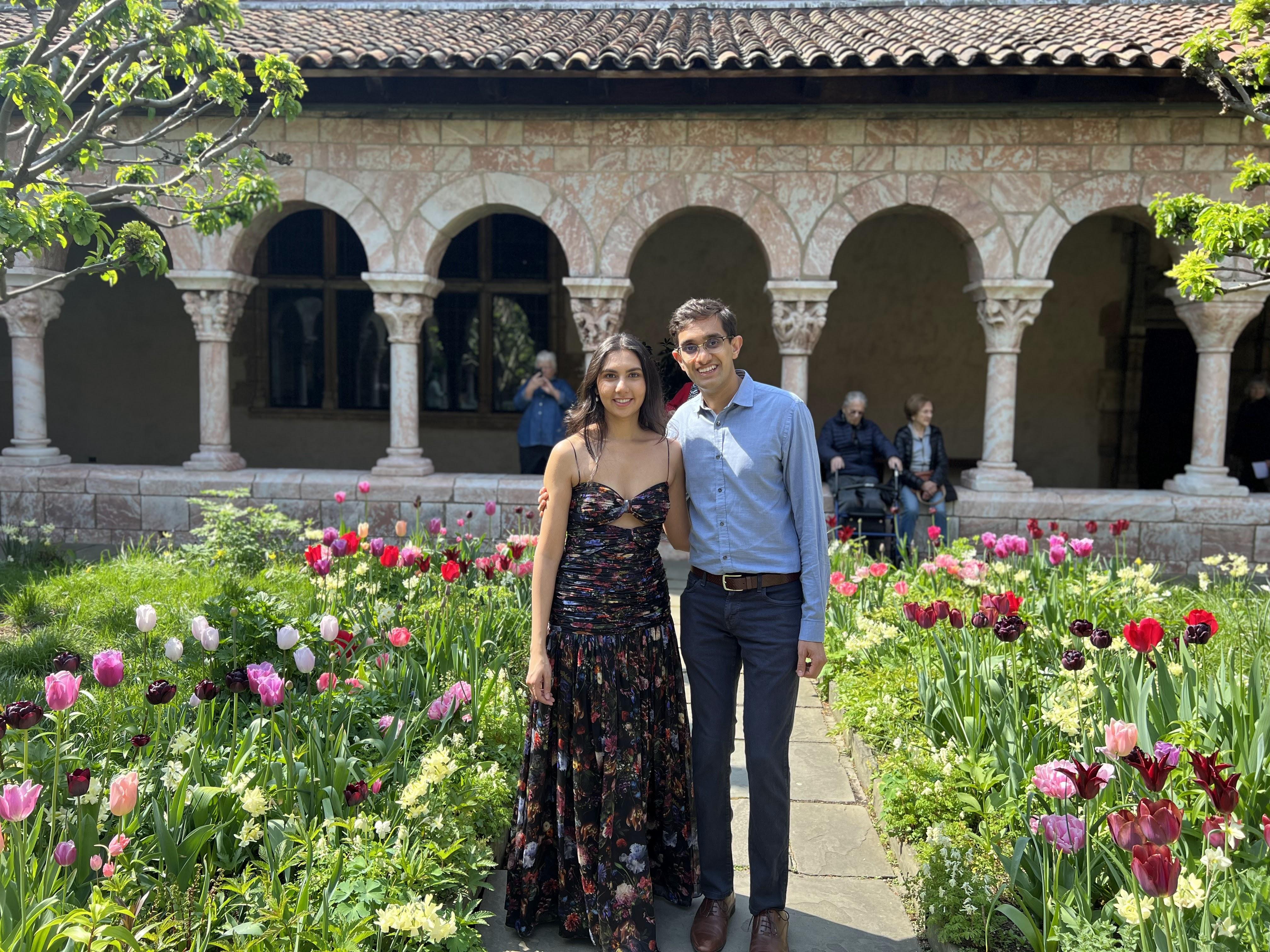Divir & Sushmita


Schedule

Monday, November 25, 2024
Mehendi
11:00 am
1, Ground Floor, Chenab, Chandigarh, CH 160002, India
Dress Code: COLOR POP
The Mehendi ceremony, a pre-wedding ritual, involves applying beautiful henna designs on the bride and groom’s palms and feet as part of their wedding makeover. Guests can also join in, choosing to adorn their hands with intricate Mehendi patterns. Mehendi symbolizes a blissful married life and represents vibrance, fertility, and the attraction of positivity. Its cooling properties are also believed to help reduce a bride’s stress as she embarks on her new journey. This ceremony is typically a celebration of color. Guests usually wear vibrant hues or even pastels. For men, the dress code is Kurta (long shirt) and Pajama (loose trousers), while women can wear a Lehenga (crop top and skirt) or Sharara Kurta. As this will be a winter wedding, the Mehendi ceremony will be held outdoors during the day, when the weather is expected to be pleasantly cool.
Ring Ceremony & Sangeet
7:00 pm
1, Grand Ballroom, Chandigarh, CH 160002, India
Dress Code: RED CARPET GLITZ & GLAM. Think Indo-western attire such as draped sarees, glittery pant suits, or even elegant gowns for women. For men, formal pant suits or tuxedos are the perfect fit for this glamorous event.
The Ring Ceremony marks the official exchange of rings between the bride and groom, symbolizing their commitment to one another. It is an intimate and elegant affair where close family and friends gather to witness this beautiful moment. The ceremony is followed by a lively cocktail hour, where guests can mingle, enjoy delicious drinks, and get ready for the night ahead. Note: The evening will continue with an exciting afterparty, so be sure to bring your best energy and comfortable dancing shoes as the celebrations will carry on into the late hours!
Tuesday, November 26, 2024
Haldi
11:00 am
1, Piccante, Chandigarh, CH 160002, India
Dress Code: SHADES OF YELLOW (to symbolize Turmeric)
The Haldi is renowned for cleansing and purifying the couple’s body before they enter into holy matrimony. Additionally, it symbolizes the joyful start of a new life together. Family and friends take turns placing a small amount of Haldi (turmeric mixed with essential oils) on the bride and groom, offering their blessings while also cleansing the couple. It adds to the glow of the bride and groom for their big day, as Haldi is known to be a great de-tanning and brightening natural ingredient.
Sehra Bandi
3:00 pm
1, Chandigarh, CH 160002, India
This ceremony is for the groom, where he is adorned with the sacred Safa (turban), marking the beginning of the wedding rituals. Male family members from the groom’s side also tie the Safa to show respect and honor for the wedding. Shortly after, the groom’s side will proceed as a Baraat (procession for marriage).
Baraat
5:00 pm
Patiala Road, Zirakpur, PB 140603, India
Traditionally, the groom’s family would visit the bride’s home to formally ask for her hand in marriage. The Baraat is a lively wedding procession that symbolizes this journey, involving music and dancing to celebrate the groom’s upcoming union.
Wedding followed by Reception
6:00 pm
Patiala Road, Zirakpur, PB 140603, India
Dress Code: REGAL INDIAN. For the final celebration, formal attire in deep tones is suggested. Lehenga, suits and sarees for women and formal suits in darker tones for men. As wedding day is the biggest function we suggest to dress formally.
The bride and groom will exchange ceremonial garlands, followed by taking their vows with Agni (the fire god) as a witness. This is one of the most sacred ceremonies in a couple’s life. Following the wedding, there will be a reception dinner to celebrate the newlyweds.